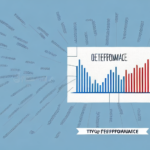Understanding Tariff Quotas, Preferential, and Autonomous Supply Chains
International trade is a crucial driver of economic growth and development in today's global economy. However, the complexity of tariffs and trade policies can sometimes be overwhelming and hard to navigate. In this article, we will explore the concepts of tariff quotas, preferential and autonomous supply chains, and how they impact global trade and business operations.
Tariff Quotas: What Are They and How Do They Work?
Tariff quotas are a trade policy tool that allows a specific quantity of a particular product to be imported or exported at a reduced tariff rate. Once the quota is exceeded, a higher tariff rate is applied to additional imports or exports, making them less competitive in the market. For example, according to the World Trade Organization, tariff quotas are commonly used in agricultural sectors to protect domestic farmers while still allowing limited imports.
The primary objective of tariff quotas is to regulate the flow of specific products into a country or region, thereby maintaining a balance between protecting domestic industries and allowing some level of international competition. This mechanism helps sustain domestic employment and can prevent market saturation with foreign goods.
Implementing tariff quotas involves complex negotiations between countries to determine appropriate quota levels. These negotiations can be prolonged and contentious, as nations seek to protect their own industries while accommodating the interests of trading partners. Businesses must stay informed about these policies to effectively plan their supply chain and business strategies.
The uncertainty surrounding tariff quotas can pose significant challenges for businesses. Companies may find it difficult to forecast the volume of products they can import or export, complicating production and sales planning. Additionally, tariff quotas can lead to market distortions, encouraging businesses to find alternative ways to bypass restrictions or shift production to unaffected products.
Despite these challenges, tariff quotas remain a widely used trade policy tool. They offer a balanced approach to protecting domestic industries while allowing limited foreign competition. Staying updated on tariff quota policies and collaborating with trade experts can help businesses navigate the complexities of international trade.
The Benefits of Preferential Supply Chains for Businesses
Preferential supply chain agreements establish favorable trading conditions between specific partners by reducing tariffs and quotas on designated products. These agreements not only lower costs but also encourage trade between the participating countries or regions. According to a report by the United Nations Conference on Trade and Development, preferential trade agreements can significantly boost trade flows and economic growth among member countries.
Beyond the financial advantages, preferential supply chains help build stronger relationships between trading partners, fostering trust and collaboration. They can also promote economic development in emerging regions by providing access to larger markets and encouraging investment.
Businesses that leverage preferential supply chain agreements can enhance their competitiveness by reducing operational costs and increasing market access. Staying informed about existing and upcoming trade agreements can provide companies with strategic advantages over competitors who may not fully utilize these policies.
Differences Between Autonomous and Traditional Supply Chains
An autonomous supply chain utilizes advanced technologies such as machine learning algorithms, robotics, and automated processes to optimize operations with minimal human intervention. These innovations lead to increased efficiency by reducing lead times, enhancing speed, and lowering costs. For instance, companies like Amazon and Alibaba have integrated autonomous systems to streamline their logistics and inventory management.
In contrast, a traditional supply chain relies heavily on manual processes and human decision-making. While human expertise can provide flexibility and adaptability, traditional supply chains are more prone to errors and inefficiencies. According to a study by McKinsey & Company, traditional supply chains can experience up to 20% higher operational costs compared to their autonomous counterparts.
The shift towards autonomous supply chains is gaining momentum as businesses seek more efficient and cost-effective ways to manage their operations. However, adopting these technologies requires substantial investment and a comprehensive overhaul of existing systems, which can be a significant undertaking for many companies.
Breaking Down the Complexity of Tariff Quotas
While the concept of tariff quotas is straightforward, their practical application is fraught with complexities. Determining which products qualify for a tariff quota and setting appropriate threshold levels involves intricate analysis and negotiation. The World Trade Organization provides guidelines, but individual countries may have varying interpretations and implementations.
Prolonged negotiations over tariff quota terms can delay trade agreements and create uncertainty in the market. These delays can impact businesses by making it challenging to plan supply chain activities and manage inventory levels effectively.
The unintended consequences of tariff quotas include market distortions and opportunities for businesses to circumvent restrictions. For example, companies might reclassify products to fall outside quota limits or seek alternative sources in non-restricted markets, potentially undermining the policy's intended protective effect.
Staying informed about policy changes and understanding the nuances of tariff quotas are essential for businesses engaged in international trade. Collaborating with trade experts and legal advisors can help navigate these complexities and mitigate potential risks.
How Tariff Quotas Affect International Trade
The implementation of tariff quotas has multifaceted impacts on global markets. On one hand, they can restrict competition by limiting the quantity of specific goods that can enter a market, leading to reduced availability and higher prices for consumers. For example, the U.S. has applied tariff quotas on sugar imports, which has maintained higher domestic sugar prices.
On the other hand, tariff quotas can provide temporary protection to nascent domestic industries, allowing them to grow and become more competitive without being overwhelmed by foreign competition. This protective measure can encourage domestic firms to invest in research and development, fostering innovation and long-term competitiveness.
Moreover, tariff quotas can contribute to price stability in global markets by preventing sudden surges in supply that could lead to volatile price fluctuations. This stability benefits both producers and consumers by providing a more predictable market environment.
However, the effects of tariff quotas are not uniformly distributed. Developed and developing countries, as well as various industries within those countries, may experience differing levels of impact. Understanding these dynamics is crucial for businesses to strategize effectively in the global marketplace.
An In-Depth Look at Preferential Supply Chain Agreements
Preferential supply chain agreements offer businesses several strategic advantages when expanding operations. These agreements can enhance product availability, provide price advantages through reduced tariffs, and strengthen relationships with trading partners. According to the Organisation for Economic Co-operation and Development, preferential trade agreements have been pivotal in promoting regional economic integration and boosting trade volumes.
However, the complexity of these agreements requires businesses to thoroughly understand their terms and conditions. Implementing preferential supply chain agreements may necessitate significant adjustments to existing supply chain strategies, including changes in sourcing, logistics, and compliance processes.
Key considerations for businesses include understanding the specific regulations under each agreement, assessing the impact on transportation and distribution networks, and optimizing inventory management to align with preferential terms. Collaborating with trade experts and leveraging technology solutions can facilitate the effective implementation of these agreements.
The Role of Autonomous Supply Chains in Modern Business Operations
Autonomous supply chains are increasingly integral to modern business operations, driven by advancements in technology. By automating processes such as inventory management, order fulfillment, and logistics, businesses can achieve significant efficiencies. For instance, the adoption of Internet of Things (IoT) devices can provide real-time data, enabling predictive analytics and proactive decision-making.
However, the transition to autonomous supply chains requires careful planning and substantial investment. Businesses must evaluate whether the long-term cost savings and efficiency gains justify the initial expenditure. Additionally, integrating new technologies with existing systems can pose challenges, requiring expertise and strategic foresight.
The benefits of autonomous supply chains include enhanced productivity, faster delivery times, and reduced labor costs. According to a Gartner report, companies that have implemented autonomous supply chain technologies have seen up to a 30% increase in operational efficiency.
Ensuring a smooth transition involves minimizing disruptions and managing risks associated with technology adoption. Businesses should adopt a phased approach, starting with pilot projects and gradually scaling up automation efforts to optimize benefits while mitigating potential downsides.
Navigating the Challenges of Tariff Quotas in Global Trade
Tariff quotas present one of the most intricate challenges in international trade due to their multifaceted nature. Companies aiming to stay competitive must strategically navigate these complexities by understanding market dynamics and policy frameworks. Leveraging market intelligence and maintaining flexibility in supply chain operations can help mitigate the adverse effects of tariff quotas.
Developing strong relationships with trading partners can provide businesses with better insights and advance notice of policy changes. Investing in research and development can also enable companies to innovate and diversify their product offerings, reducing dependence on quota-restricted goods.
Optimizing supply chain operations, such as improving logistics efficiency and enhancing inventory management, can help businesses adapt to the constraints imposed by tariff quotas. Utilizing data analytics and supply chain management software can provide the necessary tools to respond swiftly to changing trade policies.
By adopting these strategies, businesses can not only overcome the challenges posed by tariff quotas but also identify new opportunities for growth and expansion in the global market.
Understanding the Advantages and Disadvantages of Preferential Supply Chains
Preferential supply chains offer numerous benefits to businesses seeking to expand their operations internationally. These include increased access to specific markets, cost savings through reduced tariffs, and the ability to build stronger relationships with key trading partners. According to the Brookings Institution, preferential trade agreements have been instrumental in increasing trade volumes and fostering economic cooperation between nations.
However, reliance on preferential trading agreements also comes with challenges. Companies that depend heavily on these agreements may face vulnerabilities if the agreements are altered or terminated. For example, the United Kingdom's exit from the European Union has introduced uncertainties in previously established preferential supply chains.
Another potential drawback is the risk of eroding the competitiveness of domestic industries. If preferential agreements favor foreign producers too strongly, domestic businesses may struggle to compete, leading to potential job losses and reduced economic growth in certain sectors.
To maximize the benefits while minimizing the drawbacks, businesses should conduct a thorough analysis of their supply chain dependencies and diversify their market strategies. This approach can provide resilience against policy changes and ensure sustained growth despite shifts in trade agreements.
Future Trends and Developments in Autonomous Supply Chain Management
The landscape of supply chain management is rapidly evolving with technological advancements. Future trends in autonomous supply chains are expected to focus on increased integration of artificial intelligence, blockchain technology, and advanced robotics. These innovations will further enhance the efficiency, transparency, and security of supply chain operations.
Machine learning algorithms will become more sophisticated, enabling predictive analytics that can anticipate market demands and supply chain disruptions before they occur. Blockchain technology will provide immutable records of transactions, enhancing traceability and accountability across the supply chain.
Robotics and automation will continue to advance, allowing for more precise and efficient handling of goods. According to a report by Forrester Research, the adoption of these technologies is projected to reduce supply chain operational costs by up to 25% over the next decade.
However, the evolution of autonomous supply chain management also brings challenges, including the need for substantial capital investment, addressing cybersecurity threats, and managing the transition for the workforce. Businesses must strategically plan for these developments to harness their full potential while mitigating associated risks.
Strategies for Managing Tariff Quotas in a Competitive Global Environment
Effectively managing tariff quotas requires a strategic approach that encompasses negotiation, innovation, and supply chain optimization. One key strategy is negotiating preferential supply chain agreements that offer favorable terms and reduce the impact of tariff quotas. These agreements can provide businesses with greater flexibility and access to markets despite quota restrictions.
Investing in research and development is another crucial strategy. By innovating and diversifying product offerings, companies can reduce their reliance on quota-restricted goods and tap into new markets. This diversification can also enhance resilience against policy changes and market volatility.
Optimizing supply chain operations through the use of advanced analytics and supply chain management tools can help businesses respond swiftly to quota limits and adjust their logistics accordingly. Techniques such as just-in-time inventory management and demand forecasting can mitigate the risks associated with tariff quotas.
Conducting comprehensive risk assessments to identify potential vulnerabilities and opportunities allows businesses to develop robust contingency plans. These plans ensure that companies can maintain operations and capitalize on market opportunities even in the face of restrictive trade policies.
Pros and Cons of Implementing Autonomous Supply Chains
The adoption of autonomous supply chains brings a range of benefits and challenges that businesses must carefully evaluate. On the positive side, autonomous supply chains offer increased efficiency through automation, resulting in faster processing times and reduced operational costs. Additionally, they enhance accuracy and consistency by minimizing human errors in supply chain processes.
However, implementing autonomous supply chains also presents several disadvantages. The initial investment required for technology adoption can be substantial, posing a barrier for smaller businesses. Moreover, there are cybersecurity risks associated with increased reliance on digital technologies, as evidenced by recent cyberattacks targeting supply chain infrastructures.
Another concern is workforce displacement. Automation may lead to the reduction of certain job roles, necessitating retraining and upskilling of employees to adapt to new technological requirements. Balancing technological advancements with workforce sustainability is essential to ensure long-term success.
Businesses must conduct a thorough cost-benefit analysis to determine the viability of autonomous supply chains. Weighing the potential efficiency gains against the financial and operational risks will help companies make informed decisions about technology investments.
How to Optimize Efficiency in Your Supply Chain with Preferential Agreements
Optimizing supply chain efficiency through preferential agreements involves strategic planning and execution. By leveraging the reduced tariffs and quotas offered by these agreements, businesses can lower their operational costs and increase their profit margins. For example, a company importing electronics from a partner country under a preferential agreement can benefit from lower import duties, thereby reducing overall costs.
Streamlining transportation and logistics is key to maximizing the benefits of preferential agreements. Efficient routing, consolidated shipments, and optimized warehousing can reduce transit times and minimize handling costs. Implementing just-in-time delivery systems ensures that inventory levels are maintained at optimal levels, reducing storage costs and minimizing the risk of overstocking.
Reducing inventory costs through better demand forecasting and inventory management techniques allows businesses to maintain lean operations. Utilizing data analytics can provide insights into purchasing patterns and market trends, enabling more accurate forecasting and inventory planning.
Additionally, optimizing pricing and promotions based on the favorable terms of preferential agreements can enhance competitiveness in the market. Businesses can adjust their pricing strategies to reflect the cost savings achieved through reduced tariffs, making their products more attractive to consumers.
Best Practices for Adapting to Changes in Tariff Quota Policies
Adapting to changes in tariff quota policies requires businesses to adopt a proactive and flexible approach. Monitoring policy updates through official channels such as government trade departments and international organizations like the WTO ensures that companies stay informed about the latest developments.
Developing contingency plans is essential for mitigating the impact of sudden policy changes. These plans should outline steps to be taken in response to various scenarios, such as quota reductions or the introduction of new tariffs. Having predefined strategies enables businesses to respond swiftly and effectively, minimizing disruptions.
Negotiating preferential supply chain agreements can serve as a buffer against unfavorable policy changes. By securing favorable terms through bilateral or multilateral agreements, businesses can safeguard their supply chains and maintain access to key markets.
Adopting a proactive approach to risk management involves conducting regular risk assessments and reviewing supply chain operations. This continuous evaluation helps identify potential vulnerabilities and opportunities, allowing businesses to adjust their strategies accordingly.
Collaborating closely with trading partners and industry associations provides additional support and insights. Sharing information and best practices can enhance collective resilience and facilitate coordinated responses to policy changes.
Conclusion
In conclusion, understanding tariff quotas, preferential and autonomous supply chains is essential for businesses aiming to thrive in the global marketplace. Tariff quotas serve as both protective barriers and tools for market regulation, while preferential agreements offer strategic advantages through reduced trade barriers. Meanwhile, autonomous supply chains represent the future of efficient and resilient business operations.
By adopting best practices for adaptation, optimization, and regulation, companies can navigate the complexities of international trade policies effectively. Leveraging in-depth analysis, data-driven insights, and reputable sources empowers businesses to make informed decisions that minimize the downsides and maximize the benefits of global trade.
Staying abreast of policy developments, investing in technological advancements, and fostering strong trading relationships are key strategies for maintaining competitiveness and achieving sustained growth in an ever-evolving global economy.




















